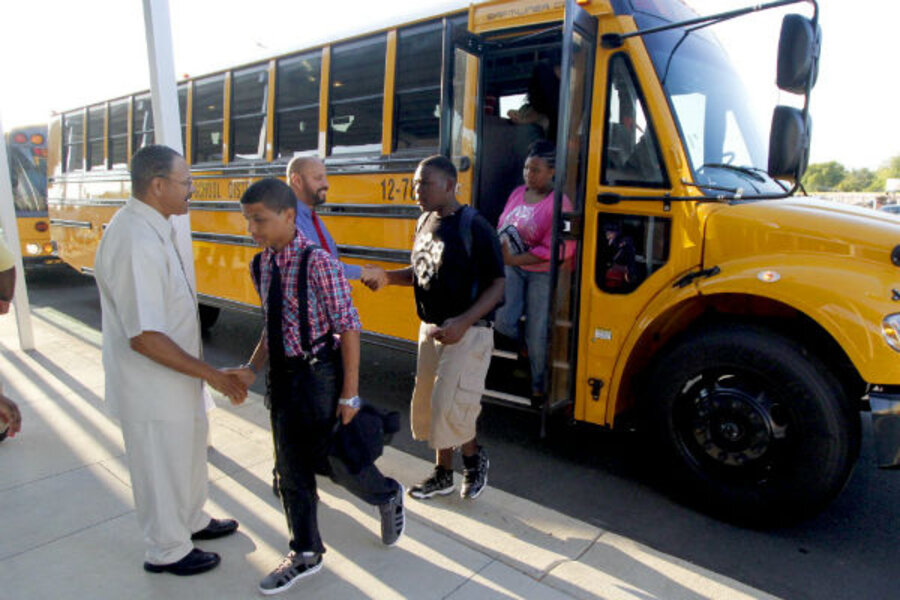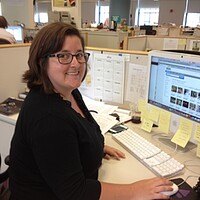Almost 1 in 5 teens smokes or uses drugs at school, US students report
Loading...
Eighty-six percent of American high school students report that some of their classmates use alcohol, tobacco, or other drugs during the school day.
That's among the most significant findings of an annual survey of teenagers about their perceptions of drug use, released Wednesday, by the National Center on Addiction and Substance Abuse at Columbia University (CASAColumbia) in New York.
The latest survey, the National Survey of American Attitudes on Substance Abuse XVII: Teens, gives parents a teen's-eye view of the relentlessness and pervasiveness of the school drug problem, says Joseph Califano Jr., founder and chairman emeritus of CASAColumbia and former US secretary of Health, Education, and Welfare.
The survey gives a “graphic portrait of what is going on in high schools and among high school students – the fact that we have 9 out of 10 students saying that classmates are using drugs, drinking, and smoking during school the day on or near school grounds,” says Mr. Califano during a phone interview.
According to their peers, 17 percent of high school students use alcohol, tobacco, or drugs while at school, the survey found by asking students to estimate the percentage of their classmates engage in this behavior while at school.
CASAColumbia has tracked the attitudes of high school students and their perceptions of drug use for 17 years. For seven of the past eight years, the survey has found that about 60 percent of high school students say their schools are "drug-infected" – that drugs are used, kept, or sold on campus. This percentage is up from 44 percent in 2002, but down from 66 percent in 2010.
The student-reported prevalence of drugs in schools is not limited to public institutions, says Califano. This year's survey found, for the first time, that more than half of students attending private school (54 percent) say illegal drugs are present at school, up from 36 percent in 2011.
More than half of high school students report that there is a place on or near campus where students go to drink, smoke, or get high, the survey found. About one-third of the students (36 percent) say it is easy for students to do this without getting caught. Also, 44 percent of high school students say they know a student who sells drugs at school. Drugs most often sold by students are marijuana (91 percent), prescription drugs (24 percent), cocaine (9 percent), and Ecstasy (7 percent).
CASAColumbia does not track the number of teen drug and alcohol users, but rather how high school students perceive the pressures they encounter day to day, Califano says. The organization used QEV Analytics, a public opinion research firm, to conduct telephone interviews with 510 girls and 493 boys between the ages of 12 and 17.
“The point is that we should not inflict this world on our kids and we are,” he says.
Percentages of ninth- and 12th-graders who admit to using drugs and alcohol, as tracked by the US Centers for Disease Control and Prevention (CDC), are lower than what the CASAColumbia survey would indicate.
Thirty-nine percent of teens have consumed alcohol in the past 30 days, according to the CDC’s 2011 national Youth Risk Behavior Survey, conducted every two years among ninth- to 12th-grade students in public and private schools. In addition, 23 percent of students say they used marijuana, 6.8 percent used cocaine, 11.4 percent used inhalants, 2.9 percent used heroin, and 3.8 percent used methamphetamines within 30 days of taking the survey.
In looking at trends of the prevalence of tobacco, alcohol, and illegal drug use on school property, the CDC reports that 5 percent of students have used alcohol and tobacco on campus, 6 percent have smoked marijuana, and 26 percent were offered, sold, or given an illegal drug.
“People are simply not paying attention,” Califano said, in explaining why there has not been much reduction in the number of "drug-infected" schools over the years. “We are trying to get parents, and other adults who have influence in kids’ lives, to look at the world as teens see it, and identify the circumstances that increase or decrease the likelihood that they will use drugs.”
Factors that increase the likelihood of teen substance abuse, according to the survey, include peer pressure via social networking websites such as Facebook and MySpace.
Students who attend "drug-infected" schools are more likely to see on social networking sites pictures of their classmates getting drunk, passing out, or using drugs, and 45 percent of students (10.9 million) have seen these types of pictures online. Of those students who have seen partying pictures, 75 percent say the pictures encourage other students to engage in that behavior, and 47 percent say the party scene looks like fun.
Students who have seen online pictures of their peers partying with drugs are more likely to engage in such behavior than are teens who have not. They are four times more likely to have used marijuana (25 percent versus 6 percent), three times more likely to have used alcohol (43 percent versus 13 percent), and almost three times more likely to have used tobacco (16 percent versus 6 percent), the CASAColumbia survey found.
“The takeaway from this survey for parents is to talk to their children and get engaged in their children’s lives,” said Emily Feinstein, CASAColumbia’s senior policy analyst and project director of the teen survey, in a statement. “They should ask their children what they’re seeing at school and online. It takes a teen to know what’s going on in the teen world, but it takes parents to help their children navigate that world.”
Parental engagement is the No. 1 way for parents to confront drug use in schools and in their teenagers’ lives, says Califano. Family dinners and attending religious services are two avenues for parents to engage with their kids.
“Parents think there is nothing they can do about it,” he says. “That attitude should change, and we are trying to change it.”
CASAColumbia’s website offers advice to parents who want to find out more about how schools deal with substance abuse. The organization suggests that parents talk to school administrators about the training teachers receive to recognize and respond to student drug use, what prevention programs the school offers and in what grades, and if the school tests for illegal substances.
“This survey drives home the fact that our leaders, whether they are presidential candidates, congressional candidates, mayors, or governors, talk about the importance of educating kids but ignore the big problem of the use of drugs,” Califano says. “If they are serious about getting kids better educated, they have to get serious about drug use. “






